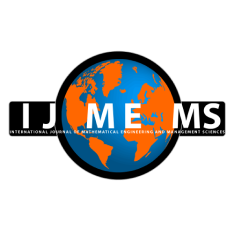Sanjay G. Sakharwade
Department of Mechanical Engineering, Bhiali Institute of Technology, Durg, India.
Shubharata Nagpal
Department of Mechanical Engineering, Bhiali Institute of Technology, Durg, India.
DOI https://dx.doi.org/10.33889/IJMEMS.2019.4.5-092
Abstract
Belt is costliest part of belt conveyor system. Sudden rise in belt tension within transient starting condition, results in belt failure and structure damage. It is difficult to measure these stresses by static calculation method and hence their presence might go undetected. Belt elongation is an evident quantity for these stresses. Dynamic belt stretch is formulated in terms of displacement response of conjugative belt units with respect to time. This paper presents analysis of the event and propagation of dynamic belt stretch for straight horizontal and straight inclined belt conveyor system. Dynamic behavior of belt system is investigated for starting condition of fully stacked conveyor belt. Belt conveyor system is considered as series of vibrating mass and its unit is assumed to be a viscoelastic segment. Equation of motion of belt unit is developed by Lagrange’s approach. Observed transient parameters are more vibrant in inclined belt than the horizontal belt system. Maximum value of dynamic belt stretch for horizontal belt systems founds 1.13% of total belt length and for inclined belt conveyor system, it is 1.16% of belt length. Both values are within range of standard value specified for fabric belt system.
Keywords- Transient, Stretch, Belt conveyor, Simulation, Lagrange.
Citation
Sakharwade, S. G., & Nagpal, S. (2019). Analysis of Transient Belt Stretch for Horizontal and Inclined Belt Conveyor System. International Journal of Mathematical, Engineering and Management Sciences, 4(5), 1169-1179. https://dx.doi.org/10.33889/IJMEMS.2019.4.5-092.



